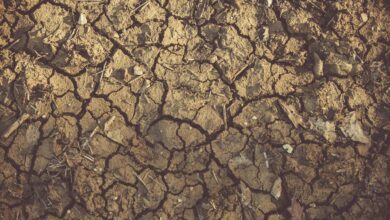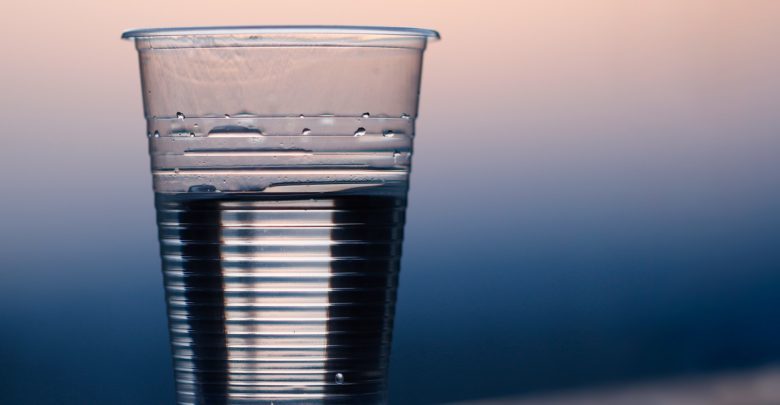
Every piece of plastic that was ever made still exists today. Over 8.3 billion tons of plastic have been produced since the 1950s and the rate of production is accelerating. Estimates of how much plastic has been recycled range from only 3-9%. Most recycling that does occur merely down-cycles the material, turning it into single-use plastic products that will simply get thrown out again. Estimates project that if we continue on our current path, ocean plastic will outnumber fish by 2050. While the problem is massive and the implications scary, we do have some hope thanks to the five promising solutions below:
The 5 Most Promising Solutions to Plastic Pollution
1. Reducing and Reusing
To solve our plastic pollution problem, our best hope is to reduce our use of single-use plastic. There are tons of reusable options available, from water bottles and containers to straws and bags. The burden shouldn’t only be on the consumer, though. Companies can play a major role in reducing their use of plastic packaging. For products like personal and home cleaning products, refill technology allows customers to refill containers when empty, rather than having to continually purchase the products in single-use bottles. Consumers have been effective in pressuring companies to reduce single-use plastic and companies are starting to respond!
To solve our plastic pollution problem, our best hope is to reduce our use of single-use plastic.
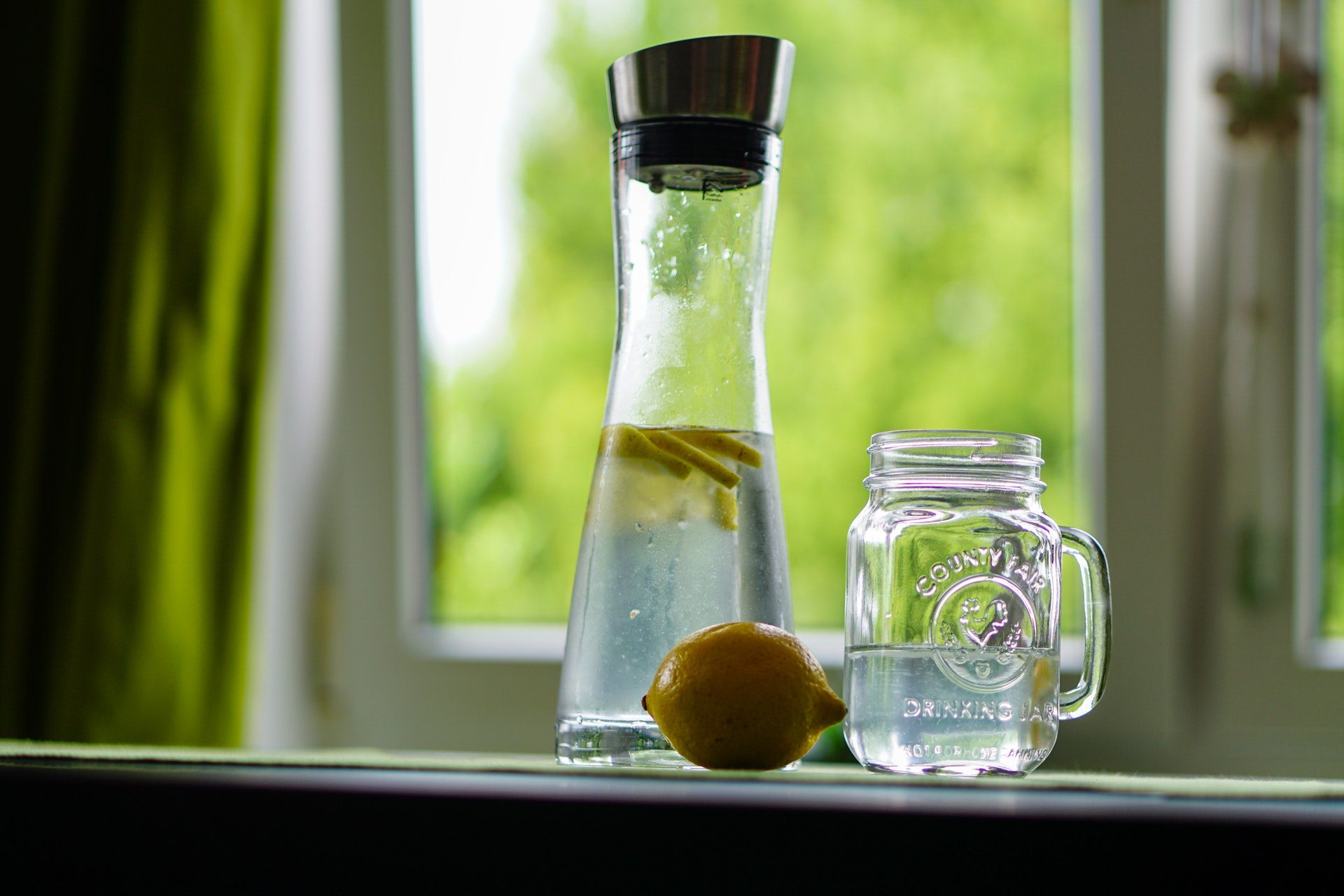
2. Sustainable Alternatives to Plastic
Rather than use traditional petroleum-based plastic, there are so many other alternatives that we can switch to:
- Recycled cardboard and responsibly-sources paper-based options can replace some plastics. Even tape can now be made with biodegradable cellulose and natural rubber-based adhesive.
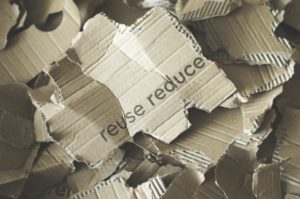
- Bamboo is a wonderful alternative to plastic. It rapidly regrows, requires no pesticides or irrigation, and it produces 35% more oxygen than trees! We’ve seen some great uses in toothbrushes, utensils, plates, and even bamboo charcoal floss!
Mycelium-based plastic alternatives and packing material are promising
- Mycelium-based plastic alternatives and packing materials are promising because they use agricultural waste as a breeding ground for the fungus, which then grows into the shape of the mold. It’s strong, light, cheap, and requires very little energy to produce.
- Biodegradable thermoplastics are created by adding degradant concentrates. These additives help plastic break down into small particles which can be eaten by microorganisms and transformed into CO2, water, and harmless biomass.
- Polyhydroxyalkanoate (PHA) polyesters are biodegradable and biocompatible plastics that are created with a renewable source: bacteria like Pseudomonas putida and Cupriavidus necator!
- Polylactic acid (PLA) is a biodegradable alternative made from lactic acid, created by fermentation. These bioplastics are renewable and require very little energy to produce.
- Edible food packaging made from seaweed, casein-based alginate, pectin, carrageenan, or konjac flour can replace some food packaging–and make it fun to eat as well!
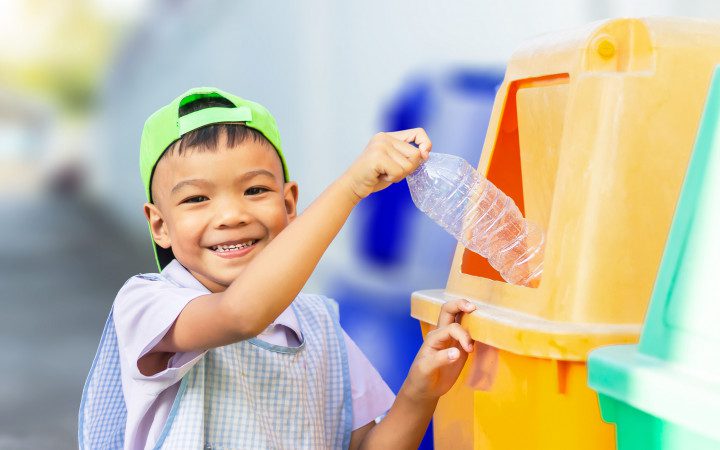
3. A circular economy for plastics
A circular economy is one where we only use what we’ve already harvested from the Earth, while working to remove and reuse existing plastic waste. While most of our plastic recycling simply “downcycles” the plastics into single-use items, a major breakthrough has come through Canadian company Loop Industries. They have pioneered a depolymerization process that deconstructs plastic waste into its basic chemical building blocks, removes the impurities, and reconstructs it into high-quality PET. This process yields new hope for repurposing existing plastic waste.
4. Clean-up efforts
Although the large cleaning machines seem like a good solution, they cannot discriminate between plastic and wildlife. Many plastic pieces are also smaller than what can be detected. Also only a very small percentage of plastic is even found on the surface. Good old-fashioned beach and waterway clean ups, however are great! Clean-ups are occurring across the world in greater frequency with more volunteers than ever. With dedicated people committed to cleaning our beaches, we can make real progress on removing plastic from our environment.
5. Single-Use Plastic Bans
All around the globe, governments and businesses, often spurred to action by dedicated citizen advocacy groups, are making moves to ban single-use plastics. Here are just some of the nations, states, cities, and companies that have taken action to reduce single-use plastics:
- Banned microbeads: The UK has banned most microbeads and Canada has banned microbeads entirely.
- Banned utensils, cups, bags, and straws: Taiwan
- Banned polystyrene: Zimbabwe
- Banned all single-use plastic: New Dehli
- Banned straws, stirrers, and utensils: Seattle and Malibu
- Banned straws: Washington’s Edmond, Florida’s Miami Beach, Fort Meyers Beach, St. Petersburg, California’s Alameda, Carmel, San Luis, Obispo, Davis, Manhattan Beach, Oakland, San Francisco, Richmond, Berkeley, Santa Barbara, NJ’s Monmouth Beach
- Banned coffee pods: Hamburg
- Banned cups, plates, lightweight bags, and cutlery: France
- Banned single-use bags: Morocco, Rwanda, Vanuatu, Cameroon, Benin, Republic of Congo, Eritrea, Gabon Gambia, Madagascar, Malawi, Niger, Senegal, Somalia, Tunisia, Uganda, some Australian states, Kenya, Indian states Sikkim & Himachal Pradesh, Montreal and provinces in Alberta, Manitoba, Prince Edward Island, & Quebec, Bangladesh, Sri Lanka Georgia, Netherlands, Italy, Bahamas, Antigua and Barbuda, Haiti, Panama, some Australian states, Papua New Guinea, Colombia, California, Puerto Rico, Samoa, many counties in Hawaii, a few cities in Colorado, Alaska, Connecticut, Illinois, Maine, Maryland, New York, Texas, Rhode Island, Oregon, & Washington, Bolivia, Brazil, and Chile. The Philippines, Pakistan, and Nepal have attempted bans, but with poor enforcement
- Placed fees on bags: China, Indonesia, Israel, South Africa, Bulgaria, Croatia, Czech Republic, Cyprus, Denmark, Estonia, Finland, Germany, Lithuania, Luxemburg, Greece, Ireland, Latvia, Norway, Poland, Romania, Slovakia, Spain, Turkey, the UK, and Argentina have introduced fees and levies to discourage use. France banned produce bags and bags under 50 microns Italy banned lightweight bags
- Companies: Ikea banned all single-use plastics, while Disney, American Airlines, Hyatt, Marriot, UK McDonalds, Alaska Airlines, Bon Appetit, SeaWorld, American Express, Royal Caribbean Cruises, A&W Canada, UK Burger King, Starbucks, and many local businesses have banned straws and stirrers
Momentum is building and innovation is advancing, bolstering our hope that humanity can come together to tackle plastic pollution. With so many dedicated advocates and innovative options available to help us move away from single-use, we can finally see a future that isn’t clogged with plastic waste.
Momentum is building and innovation is advancing, bolstering our hope that humanity can come together to tackle plastic pollution. With so many dedicated advocates and innovative options available to help us move away from single-use, we can finally see a future that isn’t clogged with plastic waste.
Plastic Pollution Solutions FAQs
What are 5 ways to reduce daily plastic in your life?
- Carry reusable shopping bags: Instead of using single-use plastic bags, carry reusable bags when you go shopping. Keep them in your car or carry a foldable bag in your purse or backpack.
- Use a reusable water bottle: Invest in a high-quality reusable water bottle and fill it up with tap water instead of buying single-use plastic water bottles. This not only reduces plastic waste but also helps save money.
- Say no to plastic straws: When ordering drinks at restaurants or cafes, request your beverage without a plastic straw. If you prefer using a straw, consider carrying a reusable one made of stainless steel, glass, or bamboo.
- Opt for reusable containers: Instead of relying on plastic containers for storing food or leftovers, switch to reusable alternatives such as glass containers or stainless steel lunch boxes. They are durable, safe for food storage, and eco-friendly.
- Choose plastic-free alternatives: Look for plastic-free alternatives for everyday items such as toothbrushes, razors, and cleaning brushes. Bamboo toothbrushes, safety razors, and natural fiber cleaning brushes are excellent options that help reduce plastic waste.
What are the 7 ways that we can help reduce plastic use?
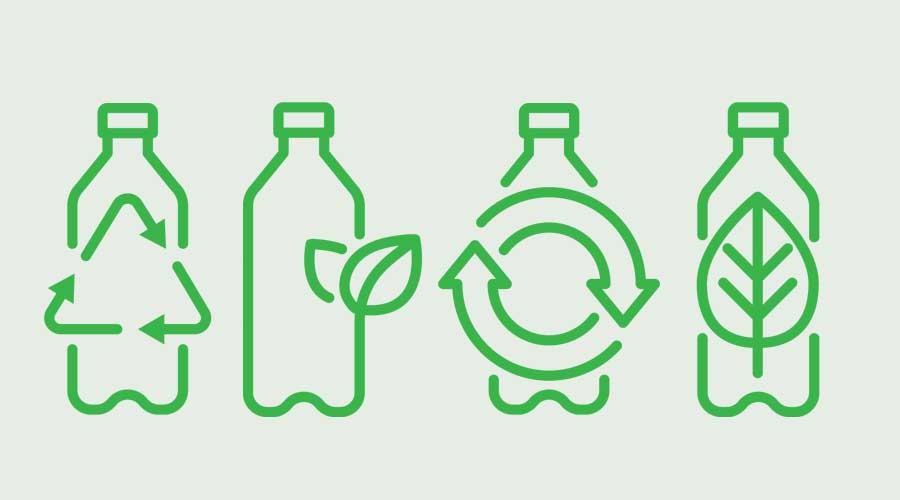
- Bring your own reusable bags: Whenever you go shopping, bring your own reusable bags instead of using plastic bags provided by stores. This simple habit can significantly reduce the amount of plastic waste generated.
- Use a refillable water bottle: Carry a refillable water bottle with you and avoid purchasing single-use plastic water bottles. You can refill it at water fountains, restaurants, or cafes, reducing the need for disposable plastic bottles.
- Say no to plastic cutlery and straws: Refuse plastic cutlery and straws when dining out or ordering takeaway food. If necessary, carry your own reusable utensils or ask for biodegradable alternatives.
- Choose products with minimal packaging: Opt for products that have minimal or eco-friendly packaging. Look for items that use recycled materials or come in packaging that is easily recyclable.
- Use cloth bags or mesh produce bags for groceries: Instead of using plastic bags for fruits, vegetables, and bulk items, bring cloth bags or mesh produce bags to the grocery store. These alternatives can be washed and reused multiple times.
- Avoid single-use plastic food containers: When packing lunches or storing food, avoid disposable plastic containers. Instead, use durable and reusable options like glass or stainless steel containers.
- Participate in local recycling programs: Make sure to properly dispose of plastic waste by participating in your community’s recycling programs. Educate yourself on what types of plastics can be recycled and how to prepare them for recycling.
How can we reduce plastic waste?
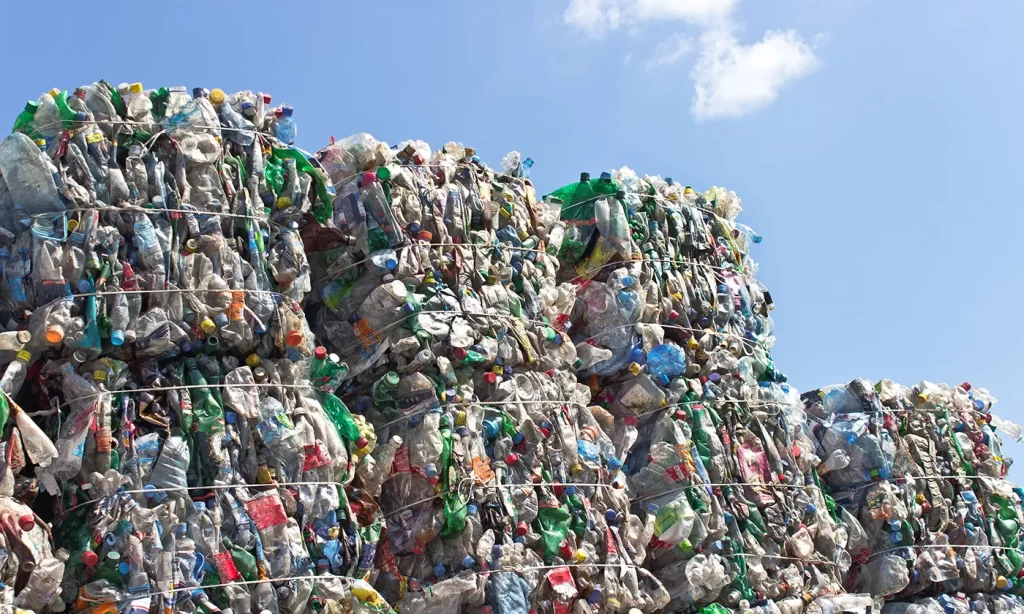
Reducing plastic waste requires collective effort and individual actions. Here are some ways to help reduce plastic waste:
- Choose reusable alternatives: Opt for reusable items whenever possible. Replace single-use plastic products such as bags, bottles, and straws with reusable alternatives made of materials like cloth, glass, or metal.
- Recycle properly: Learn about your local recycling guidelines and ensure that you’re recycling plastic items correctly. Rinse containers before recycling and separate different types of plastics to maximize the chances of them being recycled.
- Reduce packaging waste: Avoid products with excessive packaging and opt for items with minimal packaging or eco-friendly packaging materials. Look for products with recyclable or compostable packaging.
- Support plastic-free initiatives: Encourage businesses and organizations to adopt plastic-free practices. Support companies that prioritize sustainability and reduce plastic waste in their operations.
- Spread awareness and educate others: Raise awareness about the environmental impact of plastic waste by sharing information with friends, family, and your community.
How can we teach kids to reduce plastic waste?
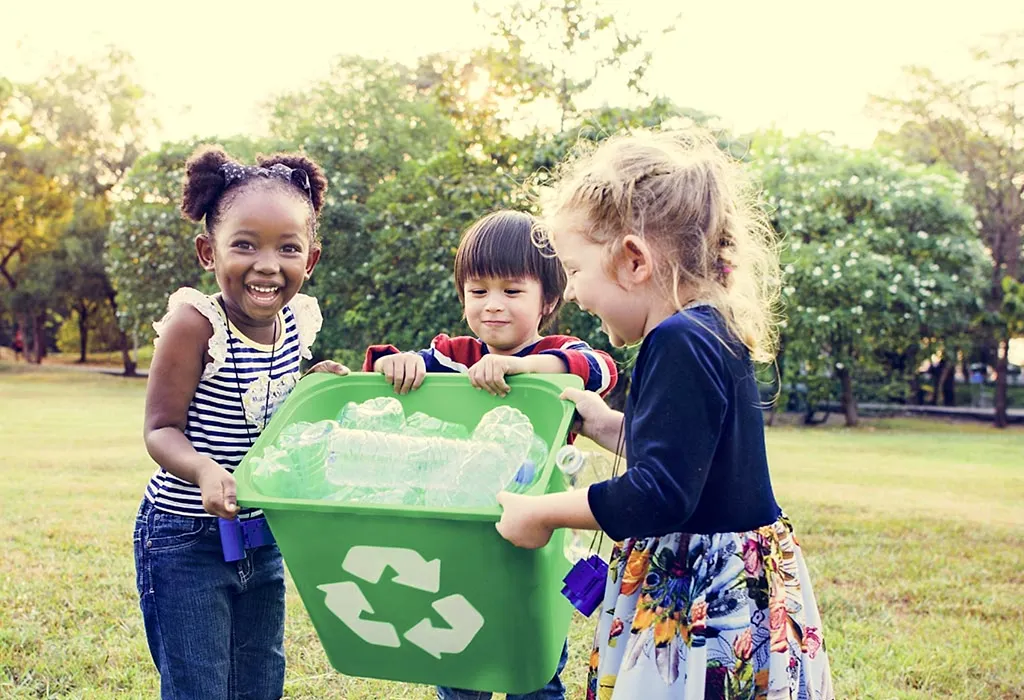
Teaching kids to reduce plastic waste is an important step in creating a sustainable future. Here are some effective strategies to help educate and encourage children to reduce their plastic consumption:
- Lead by example: Children learn best by observing and imitating adults. Set a positive example by reducing your own plastic waste and practicing eco-friendly habits. Show them how to use reusable shopping bags, water bottles, and lunch containers.
- Explain the impact: Help kids understand the environmental consequences of plastic waste. Discuss topics such as pollution, harm to wildlife, and the importance of preserving natural resources. Use age-appropriate language and visuals to convey the message effectively.
- Involve them in recycling: Teach kids about recycling and the importance of sorting waste properly. Explain which items can be recycled and how to dispose of them correctly. Make it a fun activity by creating a recycling station at home and involving them in the sorting process.
- Encourage alternatives to single-use plastics: Introduce children to alternatives to single-use plastics. Teach them to choose reusable items like metal or bamboo straws, cloth napkins, and containers for food storage. Help them understand that small changes in daily habits can make a big difference.
- Engage in hands-on activities: Engage kids in interactive and educational activities that highlight the importance of reducing plastic waste. This can include crafts using recycled materials, upcycling projects, or even organizing a beach or park cleanup. These activities make the learning process enjoyable and memorable.
- Use educational resources: Utilize educational resources such as books, documentaries, and online platforms designed to educate children about plastic waste and environmental conservation. Many organizations provide free educational materials specifically tailored for different age groups.
- Encourage responsible consumption: Teach children about the importance of making mindful choices when it comes to purchasing items. Discuss the concept of “reduce, reuse, recycle” and help them understand that buying less and choosing durable, long-lasting products can significantly reduce plastic waste.
- Promote community involvement: Encourage kids to get involved in local initiatives and community projects aimed at reducing plastic waste. This can include participating in cleanup events, joining environmental clubs or organizations, or even starting their own campaigns to raise awareness among peers.
By implementing these strategies, we can empower children to become conscious consumers and environmental stewards, contributing to a cleaner and greener future for all.

